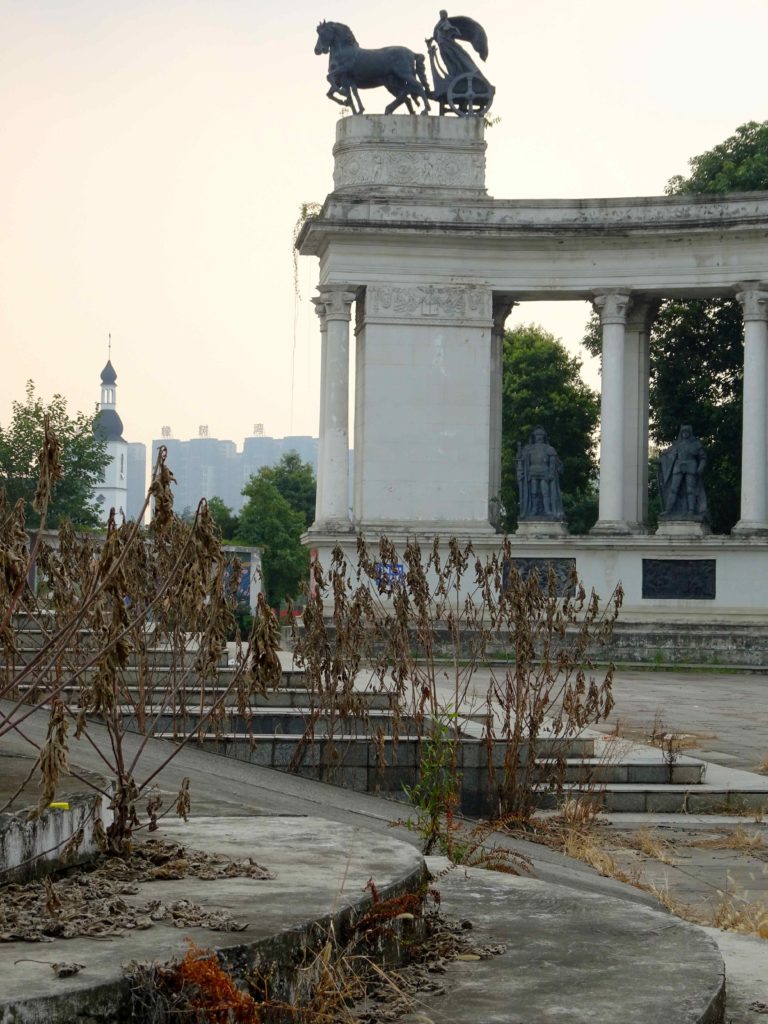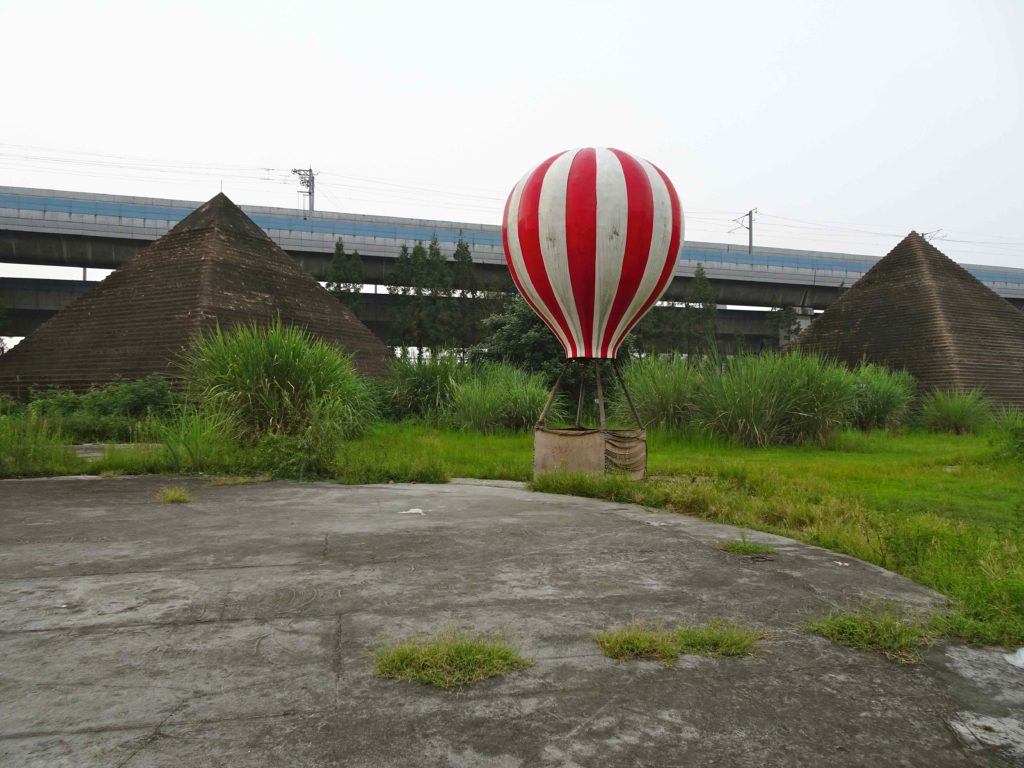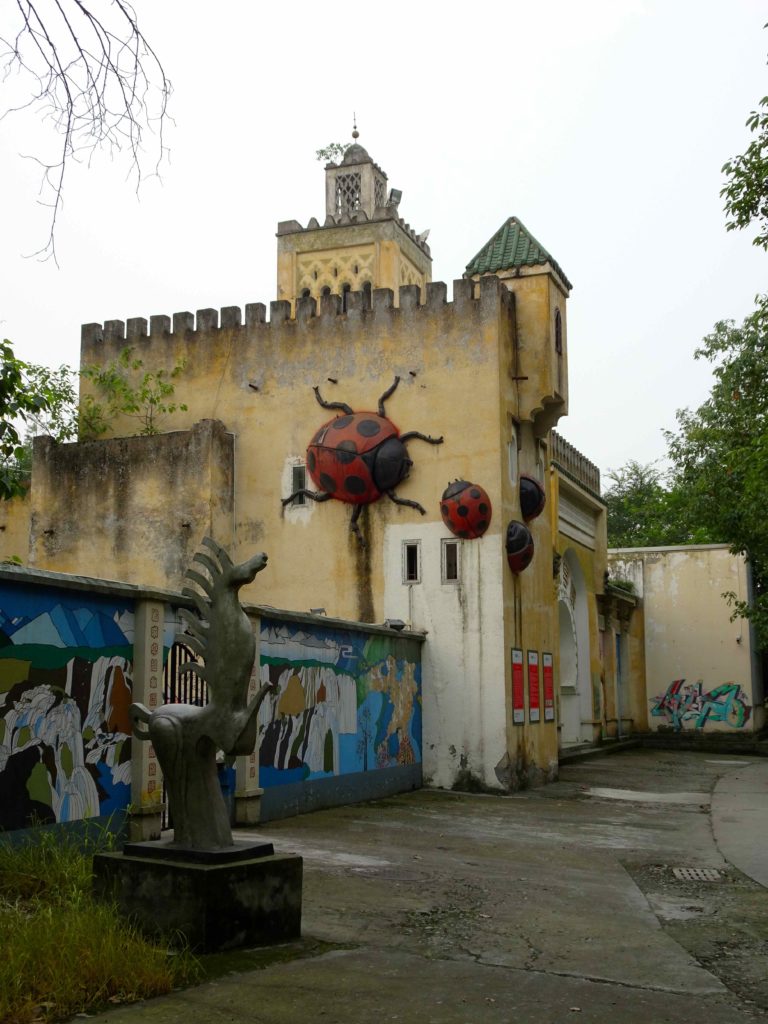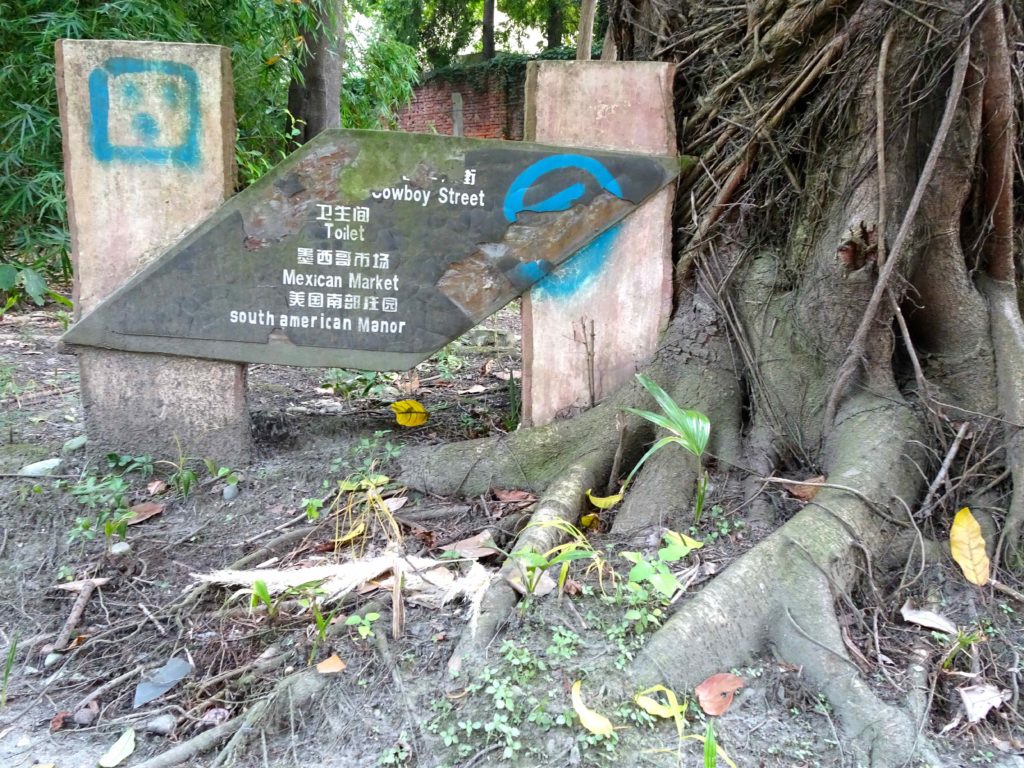Still traveling during the summer, I arrived in Chengdu, Sichuan, and looked for abandoned places there. The idea of an abandoned theme park suggested by Gui made my day: Chengdu has a « world-themed » abandoned amusement park and… it is totally ok to visit it! Welcome to the first « authorized » urbex site I have ever visited in China.

But before I tell you more about that precise park, I thought I would write a few elements of context about « world » theme parks in China.
« World » theme parks in Chinese cities: the complex interactions of global and local identities
Just like any other theme park in general, world-themed parks in China contribute to the segregation of space and the development of elitist forms of leisure and consumption1. But the case of world theme parks represents even more the complex relationship between global and local dynamics. They display very cheesy simulacra of cultural heritage, accessible without leaving China. More over, the management of the park, the way these landscapes are enjoyed, are very specific to Chinese society. There is also a moral effect of the theme park culture: it is a matrix for the loss of authenticity, of references. This issue of the cold modern life in a megalopolis is very well addressed in Jia Zhangke’s film « The world », shot in two actual amusement parks, Beijing World Park (北京世界公园) and Window on the World (世界之窗) in Shenzhen, where the world theme park is the set for the characters’ difficult search for balance and stability. Sometimes, it looks like a very oppressing place, almost like a prison.
I think those sorts of environments, those artificial landscapes, are very significant. The landscape in the World Park includes famous sights from all over the world. They’re not real, but still they can satisfy people’s longing for the world. They reflect the very strong curiosity of people in this country, and the interest they have in becoming a part of international culture…. Of course all of these landscapes are fake. But the problems our society faces are very much Chinese issues, and I think all this is not unrelated to that. We’re living in a globalised age, in a world saturated by mass media, in an international city, as it were. But despite all that, the problems we’re facing are our own problems.Jia Zhang-ke (Jaffee)2
An abandoned theme park in a university compound
The theme park of Chengdu opened in 1994. But because of management issues, the number of tourists started to decrease and in 2005, the park closed. The site was demolished for about 50% of its total surface. A lot has been lost. In 2009, the remains of the park were integrated to the campus of the Chengdu College of Textile. It is a pretty good choice, as the campus has a lucrative business of wedding photography now, just like in the Paris pastiche in Hangzhou. But also, the park is open to visitors and there are some very kitsch ruins to check out.

When walking around the park, one still gets to see some Catholic references but without the Christ statue.



It goes on with Italian landscapes such as the Rialto bridge of Venice.

I guess the weird statue is made after the « bocca de la verita » in Rome but it looks very… different. No comment. On the other side of the bridge, the giant statue of this man is a reference to… I am not sure.

The Italian references continue with this Roman-inspired architecture.



Behind the Roman landscape, one finds a strange house or castle, maybe inspired from Germany or Holland.

Hidden under the trees, there are statues of Goethe and Schiller.

A little further, one gets to see a field of fake cactus.

And then, my favorite part of the park was the Giza pyramid complex! There used to be a karting road around them.





There is also a Moroccan palace which now hosts an art institute. Hence the big ladybirds I guess.

Then, the references become Spanish.


If you look closely, you can find a totem in the bushes.


Next to the totem, you get to meet the replica of the Moai of Easter Island.

And no far, there is an Aztec reference too, in front of the university buildings.


What is a bit sad is that most clues of the former park’s organization and attractions are gone.

What is quite funny is the bad quality of the replicas, for example in the case of the Statue of Liberty.


It is interesting to remember that this is a university campus and therefore, some facilities are decorated with former theme park elements. Other buildings are still used as offices today.


I enjoyed this afternoon because I realized that not all abandoned facilities are just left to rot or torn down. I hope more of these « second life » projects get achieved in China.
If you like abandoned amusement parks, you can read my two reports about Beijing Amusement Park here and here, and you can check out the derelict American Dream Park in Shanghai.
- See Michael Sorkin (ed.), Variations on a theme park: the new American city and the end of public space, The Noonday Press, 1992. ↩
- Quoted in Clifford Hilo, « Negotiating Global/Local Identities: Jia Zhang-ke’s The World » ↩

One thought on “« The World » Theme Park / 世界乐园”